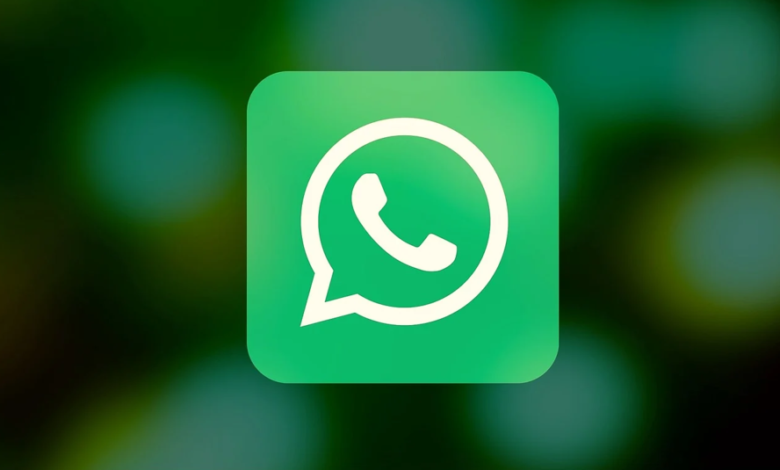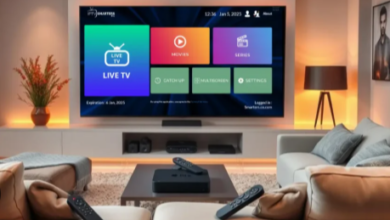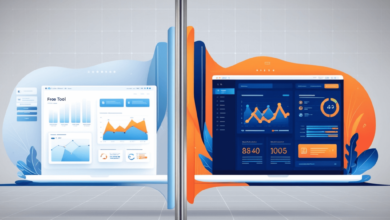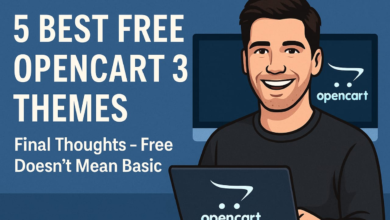Beyond Broadcasts: Crafting Personalized Customer Journeys on Popular Messaging App- WhatsApp

The landscape of customer communication has shifted dramatically from one-size-fits-all approaches to highly targeted interactions. Modern businesses recognize that customers expect personalized experiences across every touchpoint, especially on platforms they use daily. This evolution represents a fundamental change in how companies build relationships with their audience. The era of generic mass communication is giving way to sophisticated, individualized messaging strategies.
Implementing a send WhatsApp message API transforms how businesses connect with customers on the world’s most popular messaging platform. These advanced tools enable companies to move beyond simple broadcast messages toward creating unique communication flows for each customer. The technology allows businesses to leverage customer data, preferences, and behavioral patterns to deliver precisely timed, relevant content. This approach fundamentally changes the customer experience by making every interaction feel personal and valuable.
The Evolution from Mass Communication to Personal Connection
Traditional Broadcast Limitations: Mass communication strategies once dominated business messaging, sending identical content to entire customer databases regardless of individual preferences or needs. This approach often resulted in low engagement rates, high unsubscribe numbers, and customer frustration with irrelevant messages. Companies struggled to measure the effectiveness of their campaigns because the content wasn’t tailored to specific audience segments or individual behaviors.
The Shift Toward Personalization: Today’s customers expect brands to understand their unique preferences, purchase history, and communication preferences. They want to receive messages that feel specifically crafted for them, not generic announcements sent to thousands of people. This expectation has pushed businesses to adopt more sophisticated messaging strategies that treat each customer as an individual. The shift requires new technology and approaches that can handle complex personalization at scale.
Technology as the Enabler: Advanced messaging platforms now provide the tools necessary to create truly personalized customer journeys. These systems can process vast amounts of customer data, identify patterns in behavior, and automatically trigger relevant messages based on specific actions or milestones. The technology handles the complexity of personalization while maintaining the efficiency needed for large-scale operations.
Measuring Success Differently: Personalized communication requires different metrics than traditional broadcast campaigns. Instead of focusing solely on reach and impressions, businesses now track engagement quality, conversion rates, and long-term customer value. These metrics provide better insights into the effectiveness of personalized messaging strategies and help companies refine their approaches over time.
Read also: Top AI Tools for Face Swap Technology in 2025
Understanding Modern Customer Expectations
Instant Gratification Culture: Today’s consumers expect immediate responses and relevant information delivered precisely when they need it. They’ve grown accustomed to platforms that anticipate their needs and provide personalized recommendations. This cultural shift means businesses must adapt their communication strategies to meet these heightened expectations or risk losing customers to competitors who do.
Privacy and Personalization Balance: Customers want personalized experiences but remain concerned about how their data is collected and used. They expect transparency about data usage while still wanting the benefits of customized communication. Finding the right balance between personalization and privacy requires careful consideration of what information to collect and how to use it responsibly.
Multi-Channel Expectations: Customers interact with brands across multiple platforms and expect consistent, personalized experiences regardless of the channel. They might start a conversation on one platform and continue it on another, expecting the brand to maintain context throughout. This creates challenges for businesses trying to maintain personalized communication across different touchpoints.
Context-Aware Communication: Modern customers expect brands to understand the context of their interactions and respond appropriately. They want messages that acknowledge their current situation, recent purchases, or previous conversations. This level of contextual awareness requires sophisticated data processing and integration capabilities that many traditional systems can’t provide.
Building Effective Customer Journey Maps
Data Collection and Analysis: Creating personalized customer journeys begins with comprehensive data collection from multiple touchpoints. This includes purchase history, website behavior, support interactions, and engagement patterns across different channels. The data must be organized and analyzed to identify meaningful patterns that can inform personalization strategies. Companies need systems that can process this information in real-time to enable immediate personalization.
Segmentation Strategies: Effective personalization often starts with intelligent customer segmentation based on behavior, preferences, demographics, and engagement history. These segments serve as the foundation for creating targeted communication flows that speak to specific customer needs and interests. The key is finding the right balance between broad enough segments to be manageable and specific enough to feel personal.
Trigger-Based Messaging: Automated triggers based on customer actions or milestones enable timely, relevant communication that feels natural and helpful. These triggers might include welcome messages for new customers, abandoned cart reminders, or celebration messages for anniversaries. The timing and content of these messages can be customized based on individual customer preferences and past behavior patterns.
Content Personalization Techniques: Personalized content goes beyond simply inserting the customer’s name into a template. It involves tailoring the entire message based on the customer’s interests, purchase history, and communication preferences. This might include product recommendations, relevant offers, or content that matches their engagement patterns. The goal is making every message feel specifically crafted for that individual customer.
Leveraging WhatsApp’s Unique Capabilities
Rich Media Integration: WhatsApp supports various content types including images, videos, documents, and interactive buttons that can enhance personalized communication. These features allow businesses to create more engaging experiences that go beyond simple text messages. Rich media can be used to showcase products, provide visual instructions, or create interactive experiences that keep customers engaged throughout their journey.
Two-Way Conversation Flow: Unlike traditional broadcast channels, WhatsApp enables genuine two-way conversations that can adapt based on customer responses. This interactive capability allows businesses to create dynamic customer journeys that evolve based on real-time feedback. Customers can ask questions, provide preferences, or request specific information, making the experience feel more like a conversation with a helpful assistant.
Template Message Optimization: WhatsApp’s template system allows businesses to create pre-approved message formats that can be personalized with specific customer information. These templates ensure compliance with platform policies while enabling scalable personalization. The key is designing templates that feel natural and conversational while incorporating relevant customer data to make each message unique.
Integration with Business Systems: WhatsApp can be integrated with existing CRM systems, e-commerce platforms, and other business tools to create seamless personalized experiences. This integration allows customer data to flow between systems, enabling more sophisticated personalization strategies. The integration also ensures that customer interactions are tracked and analyzed to continuously improve the personalization approach.
Creating Meaningful Customer Touchpoints
Welcome and Onboarding Sequences: New customers benefit from personalized welcome sequences that introduce them to your brand and help them get the most value from their purchase or subscription. These sequences can be tailored based on how the customer discovered your brand, what they purchased, or what information they provided during signup. The goal is making new customers feel valued and helping them achieve success quickly.
Purchase and Post-Purchase Communication: Personalized messaging around purchases can significantly enhance the customer experience. This includes order confirmations that match the customer’s communication preferences, shipping updates delivered at optimal times, and follow-up messages that provide relevant usage tips or complementary product suggestions. The key is providing value at each touchpoint while avoiding message fatigue.
Support and Service Interactions: Customer support interactions provide excellent opportunities for personalization. Support agents can access customer history and preferences to provide more relevant assistance. Automated support systems can route customers to appropriate resources based on their specific needs and past interactions. This approach reduces resolution time while improving customer satisfaction.
Engagement and Retention Campaigns: Long-term customer relationships require ongoing personalized engagement that evolves as the relationship develops. This might include birthday messages, anniversary celebrations, loyalty program updates, or content recommendations based on changing interests. The goal is maintaining relevant communication that adds value to the customer’s experience with your brand.
Measuring and Optimizing Personalized Campaigns
Key Performance Indicators: Personalized messaging campaigns require specific metrics that go beyond traditional open and click rates. Important KPIs include customer lifetime value, engagement quality scores, conversion rates by segment, and retention rates over time. These metrics provide insights into the long-term effectiveness of personalization strategies and help identify areas for improvement.
A/B Testing Personalization Elements: Testing different personalization approaches helps identify what resonates best with different customer segments. This might include testing different message timing, content types, personalization levels, or communication frequencies. The key is testing one variable at a time to understand which elements contribute most to improved performance.
Customer Feedback Integration: Direct customer feedback provides valuable insights into the effectiveness of personalized communication strategies. This feedback can be collected through surveys, conversation analysis, or direct customer comments. Understanding how customers perceive your personalized messages helps refine the approach and identify opportunities for improvement.
Continuous Optimization Processes: Personalization effectiveness improves over time as more data becomes available and customer preferences evolve. Successful businesses establish processes for regularly reviewing and updating their personalization strategies based on performance data and customer feedback. This continuous optimization ensures that personalized communication remains relevant and effective.
Advanced Personalization Techniques
Behavioral Trigger Automation: Advanced personalization systems can automatically trigger messages based on specific customer behaviors or milestones. These triggers might include website visits, product views, purchase patterns, or engagement levels. The automation handles the complexity of monitoring these behaviors while ensuring timely, relevant communication that feels natural and helpful.
Predictive Personalization: Machine learning algorithms can analyze customer data to predict future needs and preferences, enabling proactive personalized communication. This might include recommending products before customers realize they need them or reaching out with support resources before issues arise. Predictive personalization represents the cutting edge of customer communication technology.
Dynamic Content Adaptation: Advanced systems can adapt message content in real-time based on current customer context, such as location, time of day, recent activity, or external factors. This level of dynamic personalization ensures that every message is optimized for maximum relevance and impact. The technology handles the complexity while maintaining a natural, conversational feel.
Cross-Channel Personalization: Sophisticated personalization strategies coordinate messaging across multiple channels to create cohesive customer experiences. This means that personalization insights gained from WhatsApp interactions can inform email campaigns, website experiences, or other touchpoints. The result is a unified, personalized experience that follows customers across their entire journey with your brand.
Overcoming Common Implementation Challenges
Data Quality and Integration Issues: Successful personalization requires high-quality, well-integrated customer data from multiple sources. Many businesses struggle with data silos, inconsistent information, or incomplete customer profiles. Addressing these challenges requires investment in data management systems and processes that ensure accurate, up-to-date customer information is available for personalization efforts.
Scalability Concerns: As businesses grow, maintaining personalized communication becomes increasingly complex. The systems and processes that work for hundreds of customers may not scale to thousands or millions. Planning for scalability from the beginning helps ensure that personalization efforts can grow with the business without compromising quality or efficiency.
Resource and Skill Requirements: Implementing sophisticated personalization strategies requires specific technical skills and resources that may not exist within the organization. This might include data analysis capabilities, technical integration expertise, or content creation skills. Businesses need to either develop these capabilities internally or partner with providers who can fill these gaps.
Compliance and Privacy Considerations: Personalized communication must comply with various privacy regulations and platform policies. This includes obtaining proper consent for data collection, providing transparency about data usage, and ensuring secure data handling practices. Staying compliant while delivering personalized experiences requires careful attention to evolving regulations and best practices.
Future Trends in Personalized Messaging
Artificial Intelligence Integration: AI technologies are making personalization more sophisticated and accessible. Machine learning algorithms can identify patterns in customer behavior that humans might miss, enabling more accurate predictions and better personalization strategies. Natural language processing can help create more conversational, human-like automated messages that feel personal and engaging.
Voice and Conversational Interfaces: The rise of voice assistants and conversational AI is changing how customers expect to interact with brands. Future personalization strategies will likely incorporate voice interactions and more natural conversation flows. This shift requires businesses to think beyond text-based messaging toward more comprehensive conversational experiences.
Real-Time Personalization: Technology improvements are enabling more sophisticated real-time personalization that adapts instantly to changing customer context and behavior. This means messages can be optimized not just based on historical data but also current circumstances and immediate needs. Real-time personalization represents the future of truly responsive customer communication.
Enhanced Privacy Technologies: New technologies are emerging that enable personalization while protecting customer privacy. These include techniques like federated learning and differential privacy that allow businesses to gain insights from customer data without exposing individual information. These advances will enable more personalization while addressing growing privacy concerns.
Conclusion
Personalized customer journeys on WhatsApp represent a fundamental shift from generic mass communication toward meaningful, individualized interactions that build stronger customer relationships. The combination of sophisticated data analysis, automated messaging systems, and WhatsApp’s rich communication features enables businesses to create experiences that feel personal and valuable to each customer. Success requires careful attention to data quality, customer preferences, and continuous optimization based on performance feedback. Ready to transform your customer communication strategy? Start by evaluating your current data capabilities and exploring how personalized messaging can enhance your customer relationships.





